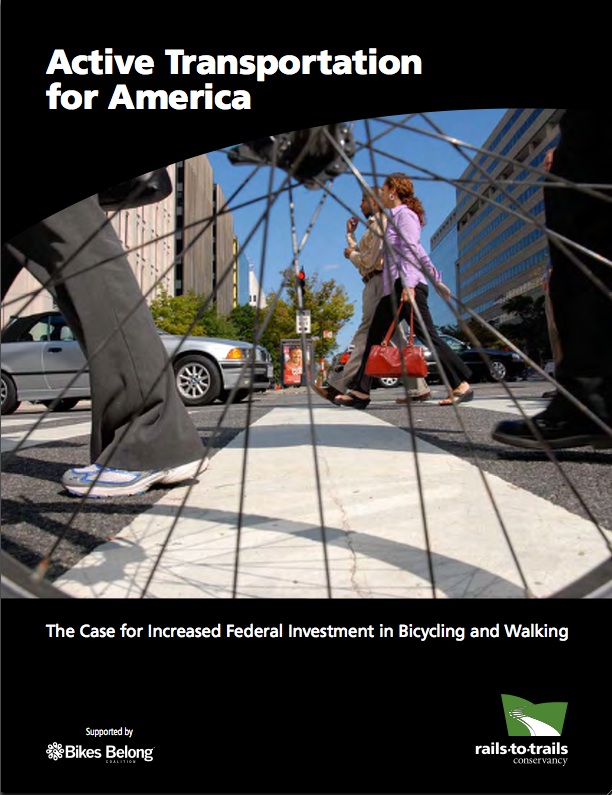The Case for Active Transportation, by the Numbers
 Thanks to commenter Stephen for prodding us to post on the new report from the Rails-to-Trails Conservancy, "Active Transportation for America" (download the PDF here).
Thanks to commenter Stephen for prodding us to post on the new report from the Rails-to-Trails Conservancy, "Active Transportation for America" (download the PDF here).
What makes the report notable are the numbers it contains. It’s jam-packed with quantifiable benefits that would result from increased investment in infrastructure that encourages and supports pedestrians and cyclists.
For instance, the report’s authors write:
- Increasing the bicycle and pedestrian share of trips of one mile or less from its current 31 percent, to 40 percent under a Modest Scenario, or to 70 percent under a Substantial Scenario, would result in 28 billion or 49 billion reduction in miles driven, respectively.
- Modest increases in bicycling and walking for short trips could provide enough exercise for 50 million inactive Americans to meet recommended activity levels, erasing a sizeable chunk of America’s activity deficit.
- For the price of a single mile of a four-lane urban highway, approximately $50 million, hundreds of miles of bicycle and pedestrian infrastructure can be built, an investment that could complete an entire network of active transportation facilities for a mid-sized city.
- The financial value of improved mobility, fuel savings, greenhouse gas reductions, and health care savings amounts to more than $10 billion annually under our Modest Scenario. For the Substantial Scenario, benefits would add up to more than $65 billion every year. These benefits dwarf historic spending for bicycling and walking, which was $453 million per year for 2005–2007 under SAFETEA-LU, and a mere $4.5 billion cumulative federal investment in these modes since 1992, when bicycling and walking first received documentable federal funding.